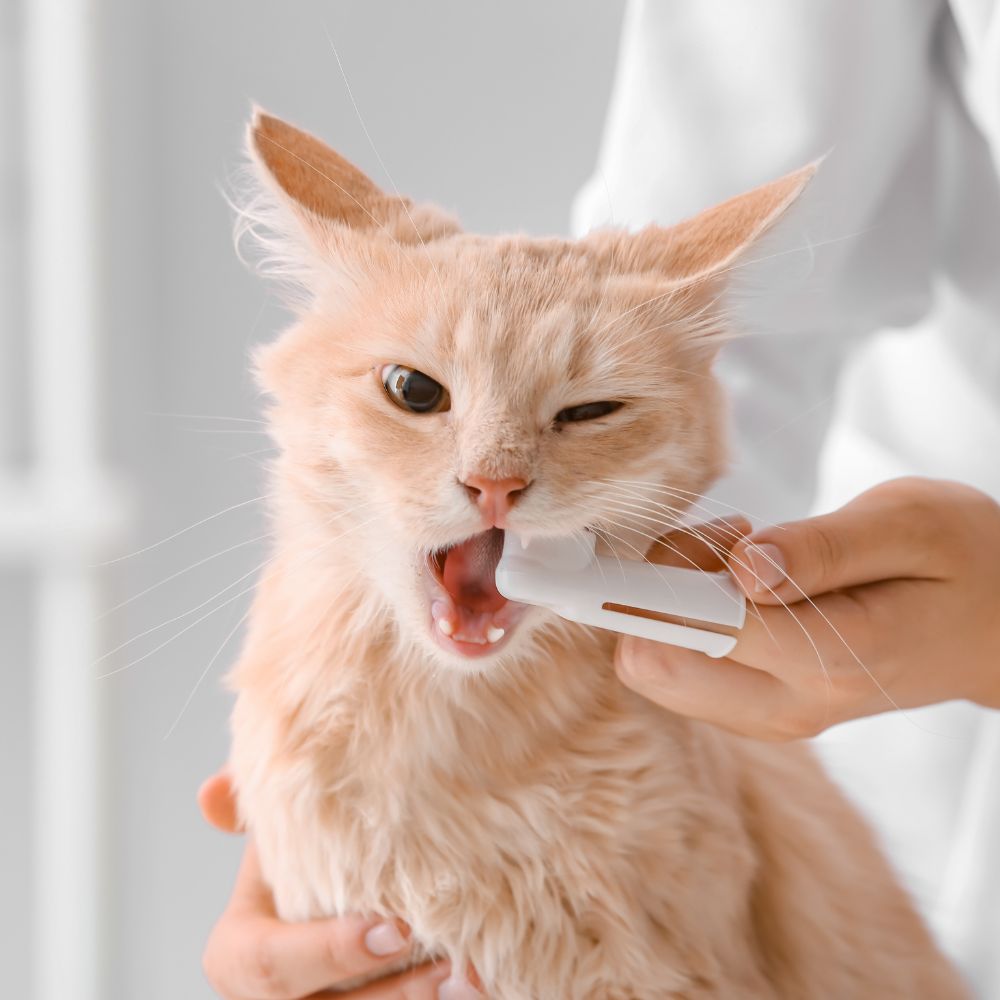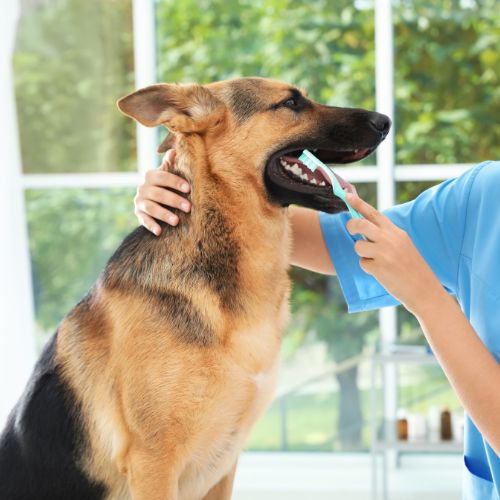Pet Dentistry In Parkville, MO
At Parkville Heights Animal Hospital, we ensure your pet’s health with our expert dental care. Prevent pain, treat issues early, and maintain a bright smile for your best friend.
Dental Health
Plaque build-up and tarter are not always signs of poor health, but their effects on your pet’s overall health could be detrimental. Once plaque adheres to the teeth, your pet is at risk of forming tartar or calculus. The calculus will attract more plaque, eventually pushing up the gums and creating pockets in the gums. This could lead to the gums deteriorating, mobile teeth, and loss of teeth.
Periodontal disease
Periodontal disease is one of the most common problems in dogs and cats despite the fact that it is easily preventable. Some statistics show as high as 85% of all pets suffer from some form of oral disease.
Preventive dental exams and cleanings are key to avoiding infection and disease, which may progress to other organ systems in the body. It’s critical to provide your pet with regular ongoing dental care, especially if you notice prevalent symptoms of periodontal disease or other oral issues.
Brushing your pet’s teeth and using oral care products prevent and delay the onset of problems with the teeth and gums. Eventually, however, a professional cleaning will be needed to remove plaque and tartar that these measures miss. Ultrasonic scaling followed by high-speed polishing is the most effective method of dental prophylaxis. It is performed under a general anesthetic.
Before anesthesia, blood work is assessed to screen for underlying organ dysfunction, which may need to be addressed or may change the anesthetic protocol. The pet is intubated with an endotracheal tube after induction of anesthesia. This measure prevents aspiration of water and cleaning solutions into the lungs.
An ultrasonic scaler is a powered scraper attached to a handpiece that removes concrete hard calculus (tartar). The end of the scaler oscillates at around 25 thousand cycles per second. This is so fast that the eye cannot detect the vibration, but tartar is blasted away easily. Tartar is so hard and firmly attached to the tooth enamel that brushing will not remove it. It harbors millions of bacteria that can invade the gums.
A gingival probe is used to measure and explore pockets around the teeth if they have occurred. Loose teeth are extracted at this point. Endodontic procedures (root canals and crowns) are performed only by specialists, and referral is usually necessary.
After scaling, a high-speed polisher removes microscopic defects in the enamel’s surface. It is the tiny pores in the enamel that give a foothold for tartar formation. Polishing can slow new tartar development significantly.
More than 85% of dogs and cats over 4 years old have some form of periodontal disease, a painful inflammatory condition in which bacteria attack the gums, ligament, and bone tissues that surround and support teeth. Senior dogs, those 7 or more years old, are especially susceptible to periodontal disease.
Even though most of us are highly motivated regarding our family’s teeth, dental care is one of the most neglected pet health needs. Try to imagine how your teeth would look and feel if you didn’t brush them daily or make regular visits to your dentist (YUK!!). The same applies to your pet’s teeth. However, the responsibility falls on us as pet owners since they aren’t capable of taking care of their own teeth.
Some signs and symptoms of poor oral health include:
- Persistent bad breath
- Sensitivity around the mouth
- Loss of appetite
- Plaque and tartar formation
- Loose, broken, or missing teeth
- Infected teeth
- Difficulty eating and chewing food
- Bleeding, inflamed, or receding gums


